Dacia Duster VS Mercedes EQS – Specs, Efficiency & Price Comparison
Which model is the better choice – the Dacia Duster or the Mercedes EQS? We compare performance (140 HP vs 761 HP), boot capacity (517 L vs 610 L), efficiency (5 L vs 16.50 kWh), and of course, the price (16200 £ vs 93900 £).
Find out now which car fits your needs better!
The Dacia Duster (SUV) is powered by a LPG, Full Hybrid or Petrol MHEV engine and comes with a Manuel or Automatic transmission. In comparison, the Mercedes EQS (Hatchback) features a Electric engine and a Automatic gearbox.
When it comes to boot capacity, the Dacia Duster offers 517 L, while the Mercedes EQS provides 610 L – depending on what matters most to you. If you’re looking for more power, you’ll need to decide whether the 140 HP of the Dacia Duster or the 761 HP of the Mercedes EQS suits your needs better.
There are also differences in efficiency: 5 L vs 16.50 kWh. In terms of price, the Dacia Duster starts at 16200 £, while the Mercedes EQS is available from 93900 £.
Compare all the key specs now and find out which model fits your lifestyle best!
Dacia Duster
The Dacia Duster represents a compelling choice for those seeking an affordable yet robust SUV in the market. With its rugged design and practicality, it tackles both urban commutes and off-road adventures with ease. Inside, the vehicle offers a spacious cabin that ensures comfort, while maintaining its reputation for delivering excellent value for money.
details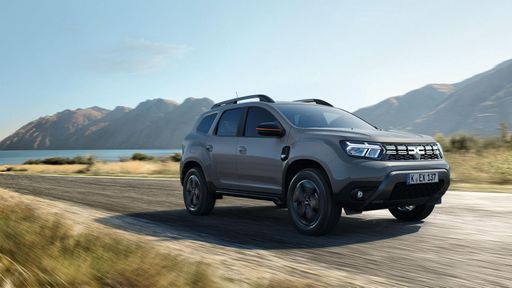 @ dacia-presse.de
@ dacia-presse.de
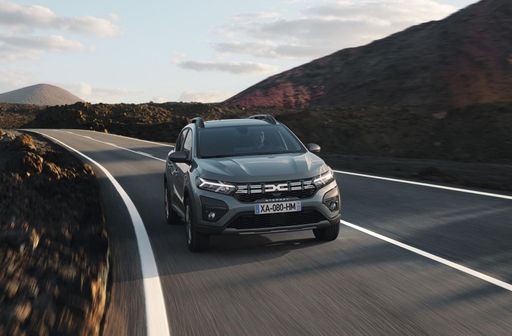 @ dacia-presse.de
@ dacia-presse.de
 @ dacia-presse.de
@ dacia-presse.de
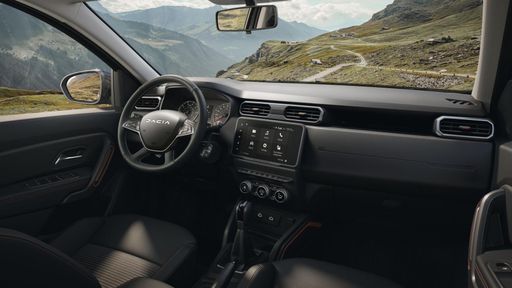 @ dacia-presse.de
@ dacia-presse.de
Mercedes EQS
The Mercedes-Benz EQS redefines luxury in the realm of electric vehicles, combining exceptional comfort with cutting-edge technology. Its sleek and aerodynamic design is a testament to both elegance and efficiency, setting new standards for the brand. Inside, the EQS offers a serene and spacious cabin equipped with the latest advancements, ensuring a refined driving experience.
details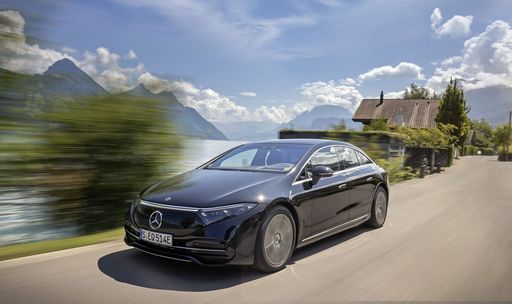 @ group-media.mercedes-benz.com
@ group-media.mercedes-benz.com
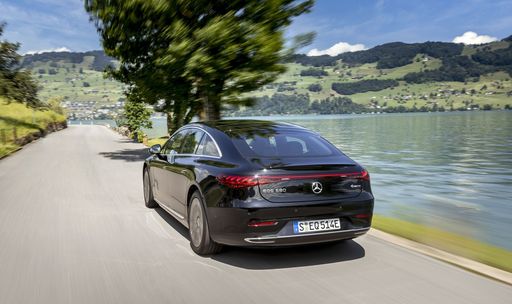 @ group-media.mercedes-benz.com
@ group-media.mercedes-benz.com
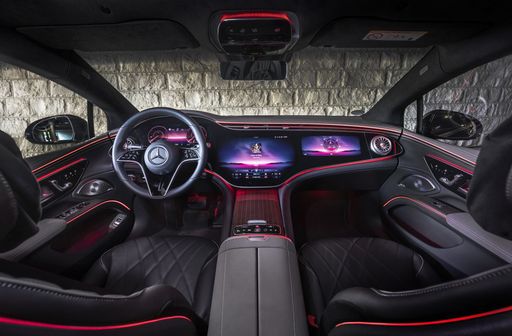 @ group-media.mercedes-benz.com
@ group-media.mercedes-benz.com
 @ group-media.mercedes-benz.com
@ group-media.mercedes-benz.com
 @ group-media.mercedes-benz.com
@ group-media.mercedes-benz.com

|

|
|
|
|
Costs and Consumption |
|
|---|---|
|
Price
16200 - 23400 £
|
Price
93900 - 136900 £
|
|
Consumption L/100km
5 - 8.1 L
|
Consumption L/100km
-
|
|
Consumption kWh/100km
-
|
Consumption kWh/100km
16.5 - 21 kWh
|
|
Electric Range
-
|
Electric Range
625 - 816 km
|
|
Battery Capacity
0.60 kWh
|
Battery Capacity
118 kWh
|
|
co2
114 - 147 g/km
|
co2
0 g/km
|
|
Fuel tank capacity
50 - 55 L
|
Fuel tank capacity
-
|
Dimensions and Body |
|
|---|---|
|
Body Type
SUV
|
Body Type
Hatchback
|
|
Seats
5
|
Seats
5
|
|
Doors
5
|
Doors
5
|
|
Curb weight
1351 - 1465 kg
|
Curb weight
2545 - 2715 kg
|
|
Trunk capacity
430 - 517 L
|
Trunk capacity
610 L
|
|
Length
4343 mm
|
Length
5223 mm
|
|
Width
1813 mm
|
Width
1926 mm
|
|
Height
1656 - 1661 mm
|
Height
1512 - 1520 mm
|
|
Payload
414 - 430 kg
|
Payload
510 - 565 kg
|
Engine and Performance |
|
|---|---|
|
Engine Type
LPG, Full Hybrid, Petrol MHEV
|
Engine Type
Electric
|
|
Transmission
Manuel, Automatic
|
Transmission
Automatic
|
|
Transmission Detail
Manual Gearbox, Automated Manual
|
Transmission Detail
Reduction Gearbox
|
|
Drive Type
Front-Wheel Drive, All-Wheel Drive
|
Drive Type
All-Wheel Drive, Rear-Wheel Drive
|
|
Power HP
91 - 140 HP
|
Power HP
360 - 761 HP
|
|
Acceleration 0-100km/h
9.9 - 14 s
|
Acceleration 0-100km/h
3.4 - 6.2 s
|
|
Max Speed
160 - 180 km/h
|
Max Speed
210 - 250 km/h
|
|
Torque
160 - 230 Nm
|
Torque
568 - 1020 Nm
|
|
Number of Cylinders
3 - 4
|
Number of Cylinders
-
|
|
Power kW
67 - 104 kW
|
Power kW
265 - 560 kW
|
|
Engine capacity
999 - 1598 cm3
|
Engine capacity
-
|
General |
|
|---|---|
|
Model Year
2024
|
Model Year
2024
|
|
CO2 Efficiency Class
D, C, E
|
CO2 Efficiency Class
A
|
|
Brand
Dacia
|
Brand
Mercedes-Benz
|
Dacia Duster
Discovering the Duster: Dacia's Affordable SUV
The Dacia Duster has long been a go-to choice for those seeking an affordable yet competent SUV. Known for its robust design and versatility, the new 2024 model year offers even more options to fit a variety of needs. Let's delve into the technical details and innovative aspects that set the Duster apart.
Engine Diversity: Tailoring to Your Needs
The Dacia Duster doesn't disappoint when it comes to engine variety. With options ranging from Gas and Voll-Hybrid to Benzin Mild-Hybrid, there's something for everyone. The engine power spans from 91 to 140 PS, providing levels of performance suited to different driving styles. Notably, the hybrid options are a nod to the growing demand for more eco-friendly vehicles while still maintaining affordability.
Efficiency and Performance in Harmony
Efficiency is a key highlight of the Duster lineup. Fuel consumption rates from 5 to 8.1 litres per 100 km make it a great choice for budget-conscious drivers. Coupled with acceleration times ranging from 9.9 to 14 seconds for 0-100 km/h, the Duster provides a balanced blend of economy and performance.
Precision in Design: Dimensions and Interior Space
The Dacia Duster stands at 4,343 mm in length, 1,813 mm in width, and height varies between 1,656 to 1,661 mm. These dimensions create an ample interior, comfortably seating five passengers with a boot capacity ranging from 430 to 517 litres. This is further enhanced with the different trim levels such as Essential, Expression, Extreme, and Journey, each offering various features.
Advanced Drivetrain Options
Dacia has always been keen on providing choice in drivetrain configurations to cater to a wider audience. The Duster is available with both front-wheel and all-wheel drive options, powered by either a manual or automatic transmission. This flexibility ensures that the Duster can handle both urban commutes and off-road adventures with equal competence.
Technical Specifications: A Deep Dive
The Dacia Duster is equipped with a variety of technical features that ensure a smooth driving experience. It features a range of torque outputs from 160 to 230 Nm, depending on the model. The vehicle's weight varies between 1,351 and 1,465 kg, which aids in its adept handling and stability. Moreover, the Duster meets modern safety expectations with CO2 emissions ranging from 114 to 147 g/km. The SUV's CO2-Effizienzklasse spans from D to E, reflecting its environmental considerations.
Conclusion: A Solid Choice in the SUV Market
The Dacia Duster remains a solid choice for drivers seeking an SUV that combines affordability, efficiency, and versatility. With its wide range of configurations and technical prowess, it continues to be a competitive player in the SUV segment. Whether you're after fuel efficiency, a bit more power, or the capability of off-road adventures, the Duster has you covered.
Mercedes EQS
Revolutionising Electric Mobility: The Mercedes-Benz EQS
The automobile industry is undergoing a remarkable transformation, and at the forefront of this evolution is the Mercedes-Benz EQS. As a flagship model of the German marque's electric lineup, the EQS represents the pinnacle of luxury and innovation in the sphere of electric vehicles (EVs). With its sleek silhouette, unparalleled technology, and sustainable power, the EQS promises to set new standards for luxury electric driving.
Elegant Design Meets Intelligent Engineering
The Mercedes-Benz EQS is designed with an aesthetic that reflects both futuristic vision and traditional elegance. Its elongated body, measuring 5,223 mm in length, conveys a powerful presence on the road while ensuring optimal aerodynamics. The front fascia, with its innovative LED lighting design, provides a distinctive visual signature whether the car is in motion or stationary.
Additionally, the EQS features a spacious boot with a capacity of 610 litres, ensuring practicality is not sacrificed for style. Attention to detail is evident everywhere, from the 1,926 mm wide stance that provides stability and poise to the exquisite interior craftsmanship that creates an atmosphere of refined luxury.
A Masterclass in Performance and Efficiency
Underneath its elegant exterior, the Mercedes-Benz EQS houses some of the most advanced technological innovations. It boasts an electric powertrain with a range of power outputs from 360 PS to an impressive 761 PS, thanks to its sophisticated dual-motor setup. With a maximum speed ranging between 210 and 250 km/h, the EQS ensures that electric mobility does not compromise on performance.
Efficiency is also a key player with the EQS. The model achieves an impressive energy consumption rate starting from 16.5 kWh per 100 km, empowering drivers with an electric range extending up to 816 km on a single charge. This is made possible by the vehicle’s substantial 118 kWh battery capacity, paired with advanced energy recuperation systems.
Setting New Standards for Technological Innovation
The EQS is not just about what's under the bonnet; it’s also about the cutting-edge technology that enhances every driving experience. The revolutionary MBUX Hyperscreen is a standout feature, extending across the dashboard with a seamless blend of screens, providing unparalleled interactive experiences and information at the driver's fingertips.
Safety and driver assistance are paramount, with features such as the latest generation of driving aids, ensuring both safety and convenience. The EQS is equipped with numerous sensors and AI-driven systems that effortlessly adapt to road conditions and driver behaviour, providing support and confidence in every journey.
Environmental Commitment and Cost Efficiency
With zero CO2 emissions on the road, the EQS is emblematic of Mercedes-Benz’s commitment to sustainable and environmentally friendly mobility. Furthermore, the cost-effectiveness of operating an EQS is another attractive feature, with ownership costs ranging from €2,117 to €2,827 per month, depending on the driving style and specific configuration. The EQS is not only setting a benchmark in luxury and innovation but also paving the way for a greener future.
Conclusion: The Future is Electric
The Mercedes-Benz EQS stands as a testament to the future of the automotive industry. It combines sustainability with luxurious comfort, cutting-edge technology with outstanding performance. For those seeking to make a statement and lead the charge towards an electrified motoring future, the EQS offers an unparalleled experience that is as innovative as it is inspiring.
The prices and data displayed are estimates based on German list prices and may vary by country. This information is not legally binding.
